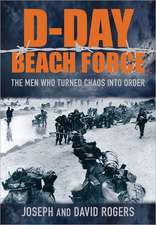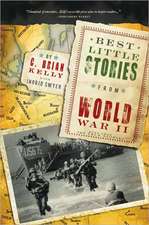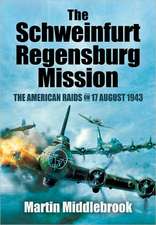Bunker Hill To Bastogne: Elite Forces and American Society
Autor Briton Cooper Buschen Limba Engleză Paperback – 30 iun 2007
America’s curiosity about elite military units is greater than ever in today’s crisis-ridden world. And while numerous books have examined the various elite forces, Bunker Hill to Bastogne goes much further to show the relationship between these special units and the societies that gave birth to them. Though America in general has often regarded its military establishment as an unfortunate necessity, elite formations have nearly always emerged in moments of crisis. And while their exploits have fostered the cherished image of the individualistic but loyal rifleman-ranger, these legends have not always corresponded to reality. America’s roster of heroic images has long included esteemed elite units, running the gamut from Roger’s Rangers at Fort Ticonderoga during the American Revolution to Berdan’s Sharpshooters during the Civil War and the paratroopers of Normandy in World War II. But despite Americans’ reverent regard for, and patriotic depiction of, elite units, they initially distrusted the idea of a standing army given such abuses as the quartering of soldiers in citizens’ homes. Indeed, the egalitarian American spirit caused the Founding Fathers to discourage a class of emperor-making military elites. And yet, elite units did emerge during every major American conflict. But the evolution of such forces has taken place in fits and starts, with units often demobilizing after a particular crisis had passed. Only since World War II have elite units become a consistently relied-upon arm of the military for dealing with constantly erupting global crises. Bunker Hill to Bastogne is a unique and timely chronicle of the birth and evolution of elite forces and the American public’s reactions to them. It shows that despite Americans’ wariness of a possible military elite, their love of the fabled rifleman-ranger has seldom dwindled, though in the twenty-first century their hero might wear a green beret rather than a coonskin cap.
Preț: 109.26 lei
Nou
Puncte Express: 164
Preț estimativ în valută:
20.91€ • 21.71$ • 17.43£
20.91€ • 21.71$ • 17.43£
Carte disponibilă
Livrare economică 03-17 martie
Preluare comenzi: 021 569.72.76
Specificații
ISBN-13: 9781574887761
ISBN-10: 1574887769
Pagini: 320
Dimensiuni: 152 x 229 x 15 mm
Greutate: 0.43 kg
Editura: Potomac Books Inc
Colecția Potomac Books
Locul publicării:United States
ISBN-10: 1574887769
Pagini: 320
Dimensiuni: 152 x 229 x 15 mm
Greutate: 0.43 kg
Editura: Potomac Books Inc
Colecția Potomac Books
Locul publicării:United States
Recenzii
"Briton Busch’s Bunker Hill to Bastogne: Elite Forces in American Society is a valuable addition and welcome new perspective to the study of the military history of the United States. It is not just a well-written and engaging history of the elite forces but also an illustration of how the story of the rugged individualist in the guise of the lone rifleman has such an appeal to Americans. Highly recommended."—Peter Tsouras, author of Gettysburg: An Alternative History and Alexander: Invincible King of Macedonia
"I found Bunker Hill to Bastogne to be well-written and painstakingly researched. The late Dr. Busch’s fact-filled and insightful book on the evolution of elite units within the American armed forces will make a great addition to the library of anyone interested in military history."—Larry Alexander, author of the bestselling Biggest Brother: The Life of Major Dick Winters: The Man Who Led the Band of Brothers
"Bunker Hill to Bastogne is a carefully researched, beautifully written history of America’s unique military tradition and elite-force lineage. It belongs in the collection of every serious student of military history."—W. Thomas Smith, Jr., former U.S. Marine, columnist, and author of the Encyclopedia of the Central Intelligence Agency
“An interesting, easy-to-read book.”—Armor
"Busch has provided a solidly researched and exceptionally written look into America's elite forces and the times that produced them. . . .a must read for those who ponder what tomorrow's force structure will be."—Journal of Military History







